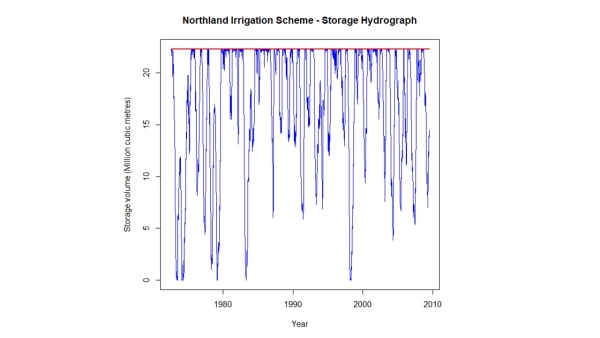Demand for water has intensified over the past two decades at a phenomenal rate in New Zealand. Most easy-to-abstract direct run-of-stream resources (i.e. flows without existing upstream modification) are already highly allocated in many regions. With availability of further run-of-stream resources decreasing, farmers are looking more to water storage as a way of achieving more reliable irrigation water supply. This approach allows more water to be made available at the time of need and thus enhances supply reliability.
There are many factors that need to be considered in development of water storage however, such as environmental impacts, economic benefits, social and cultural implications, potential employment opportunities, and farmer and community well-being. Due to high uncertainty and contentions associated with storage development at the initial stage of a project, obtaining stakeholder support to undertake robust assessment can be difficult. Such uncertainties and challenges include identification of suitable locations for storage (including addressing the ‘not-in-my-backyard’ [NIMBY] challenge) size of storage, irrigation demand and uptake, water availability, irrigation reliability and likely cost. Most of these issues arise due to a lack of available information at the early stage of the concept development. Stakeholders generally like to have reliable information and knowledge relating to the multiple options for consideration for example. Due to the complex nature of these social, economic and technical uncertainties, it can be extremely expensive and time-consuming to carry out a detailed study to determine the full potential of water storage development. Therefore, it is important to devise a cost-effective but sufficiently accurate approach to assess the pre-feasibility of storage development in preparation for more detailed investigation.
NIWA has developed a software tool to undertake preliminary assessments to inform stakeholders on the feasibility of different water storage options. This tool uses catchment irrigation demand (estimated from topography, climate and soil information) and catchment flow data. These data are used to optimise the potential capacity of a reservoir and irrigable area with available water resources, to achieve the required irrigation reliability under regional allocation rules. As the runtime of this software is short (generally less than 1 minute), multiple options (such as different allocation rules and reliability criteria) can be considered.
This software tool can be used in conjunction with NIWA’s national hydrological model ‘TopNet’, to assess the viability of irrigation storage development for any (gauged or ungauged) catchment in New Zealand, to obtain a preliminary understanding of the feasibility of a water storage development.
Funding
This project is in the Water Resources Programme, supported by NIWA through the Strategic Science Investment Fund.


